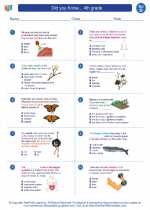Longitudinal Waves
Longitudinal waves are a type of mechanical wave in which the vibration of the medium is parallel to the direction of the wave. This means that the particles of the medium move back and forth in the same direction that the wave is traveling.
Characteristics of Longitudinal Waves:
- Particle Motion: In longitudinal waves, the particles of the medium move parallel to the direction of the wave. This motion creates areas of compression and rarefaction in the medium.
- Compression and Rarefaction: As the wave travels through the medium, it creates areas of compression where the particles are close together, and areas of rarefaction where the particles are spread apart.
- Examples: Common examples of longitudinal waves include sound waves and seismic waves.
- Propagation: Longitudinal waves can propagate through solids, liquids, and gases. The speed of the wave depends on the properties of the medium through which it is traveling.
- Waveform: The waveform of a longitudinal wave can be represented by a series of compressions and rarefactions.
Study Guide:
Here are some key points to remember about longitudinal waves:
- Understand the motion of particles in a longitudinal wave and how it differs from transverse waves.
- Be able to identify examples of longitudinal waves in everyday life, such as sound waves and seismic waves.
- Learn about the propagation of longitudinal waves and the factors that affect their speed.
- Practice drawing and interpreting waveforms of longitudinal waves, including identifying compressions and rarefactions.
Remember to review your notes, diagrams, and examples to reinforce your understanding of longitudinal waves.
Good luck with your studies!
.◂Science Worksheets and Study Guides Fourth Grade. Did you Know... 4th grade
Study Guide Did you Know... 4th grade
Did you Know... 4th grade  Worksheet/Answer key
Worksheet/Answer key Did you Know... 4th grade
Did you Know... 4th grade  Worksheet/Answer key
Worksheet/Answer key Did you Know... 4th grade
Did you Know... 4th grade  Worksheet/Answer key
Worksheet/Answer key Did you Know... 4th grade
Did you Know... 4th grade 

 Worksheet/Answer key
Worksheet/Answer key
 Worksheet/Answer key
Worksheet/Answer key
 Worksheet/Answer key
Worksheet/Answer key

The resources above cover the following skills:
Core Ideas for Knowing Science
Life Science
Organisms are organized on a cellular basis and have a finite life span.